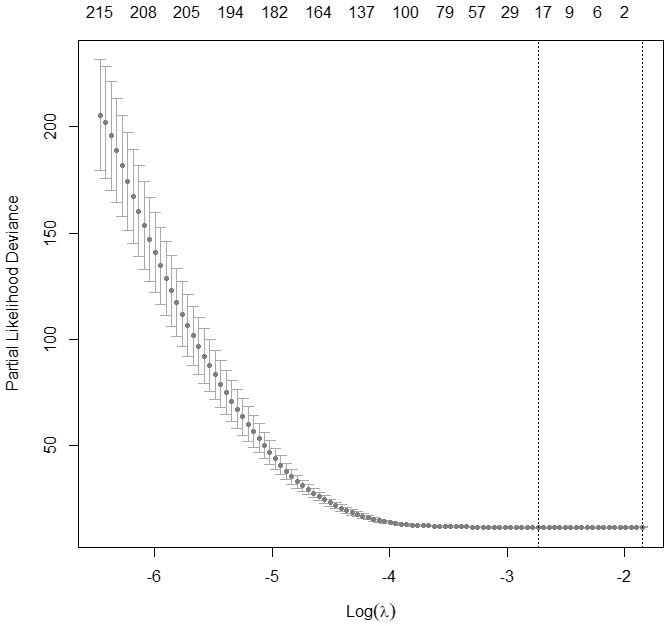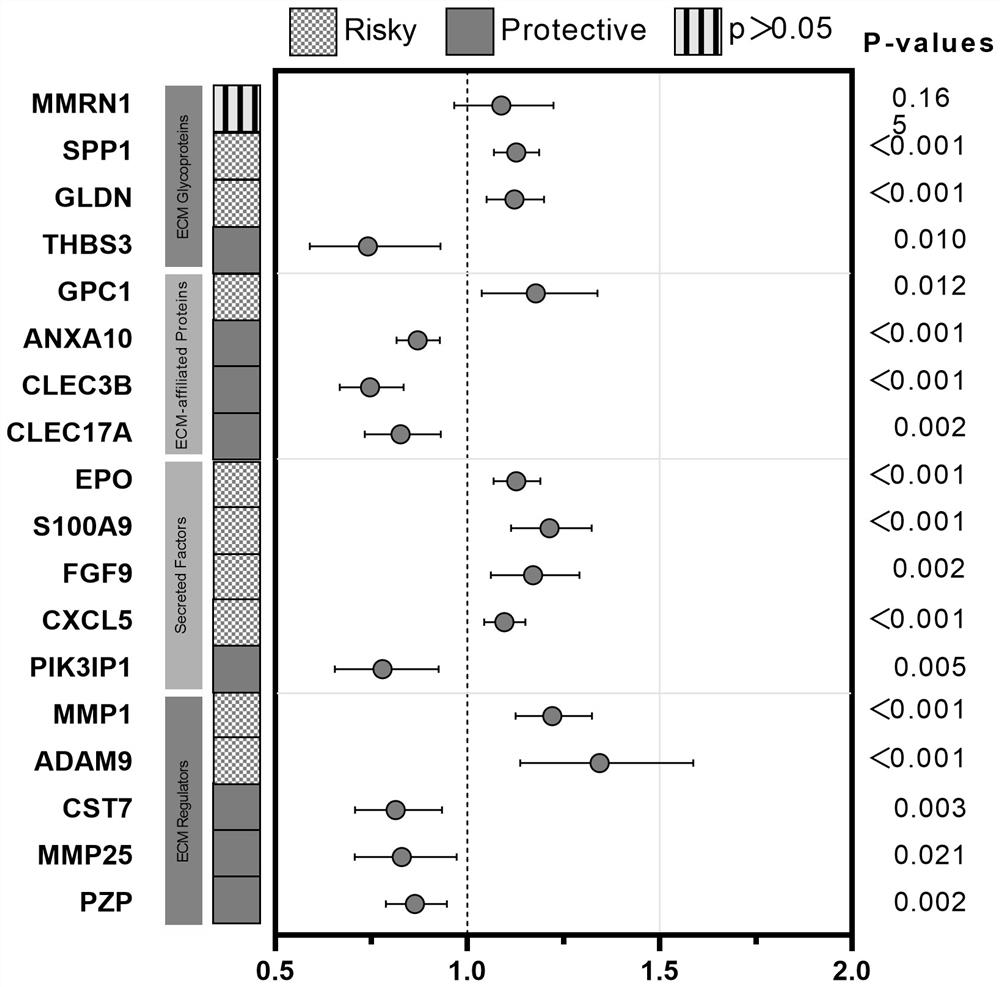Gene model for judging prognosis of hepatocellular carcinoma patient, construction method and application
A hepatocellular carcinoma and gene technology, applied in the field of biomedicine, can solve the problems of early intervention and early treatment of patients with hepatocellular carcinoma, risk stratification of patients with inability to hepatocellular carcinoma, lack of markers for predicting patients with hepatocellular carcinoma, etc. Effects of overtreatment
- Summary
- Abstract
- Description
- Claims
- Application Information
AI Technical Summary
Problems solved by technology
Method used
Image
Examples
Embodiment 1
[0033] Example 1: Construction of a gene model for judging the prognosis of patients with hepatocellular carcinoma
[0034] The gene model for judging the prognosis of patients with hepatocellular carcinoma of the present invention is constructed and obtained through the following steps:
[0035] (1), first download the transcriptome data of 371 hepatocellular carcinoma tissue samples and 50 normal liver tissue samples and the clinical information of the corresponding patients from the TCGA database (https: / / portal.gdc.cancer.gov / ) (including Gender, overall survival time, survival status, etc.), compare the data of hepatocellular carcinoma tissue samples in the TCGA database with the differential genes in normal liver tissue samples, set P-valuefigure 1 ).
[0036] (2), then use the LASSO method for analysis, and use 1000 Cox LASSO regression iterations and 10-fold cross-validation based on the R language glmnet package to screen out 18 statistically significant candidate gen...
Embodiment 2
[0040] Example 2: Application of Hepatocellular Carcinoma Prognosis Prediction Risk Score Model in Evaluating the Prognosis of Hepatocellular Carcinoma
[0041] The transcriptome data of 371 hepatocellular carcinoma tissue samples in the TCGA database were used as the training set, 247 hepatocellular carcinoma tissues in the GEO database (https: / / www.ncbi.nlm.nih.gov / geo / ) GSE140520 and the ICGC database (https http: / / daco.icgc.org / ) data of 203 cases of hepatocellular carcinoma tissues were used as the verification set, and the score of each hepatocellular carcinoma patient in the training set was calculated according to the risk scoring model, and the median score (0.044954) was taken as The cut-off value divided them into high-risk score group and low-risk score group, and drew the relationship between risk score and survival period, CLIP stage and TMN stage of patients in the two groups ( Figure 4-8 ), to verify the effect of the risk score model for predicting the progno...
PUM
 Login to View More
Login to View More Abstract
Description
Claims
Application Information
 Login to View More
Login to View More - R&D
- Intellectual Property
- Life Sciences
- Materials
- Tech Scout
- Unparalleled Data Quality
- Higher Quality Content
- 60% Fewer Hallucinations
Browse by: Latest US Patents, China's latest patents, Technical Efficacy Thesaurus, Application Domain, Technology Topic, Popular Technical Reports.
© 2025 PatSnap. All rights reserved.Legal|Privacy policy|Modern Slavery Act Transparency Statement|Sitemap|About US| Contact US: help@patsnap.com



